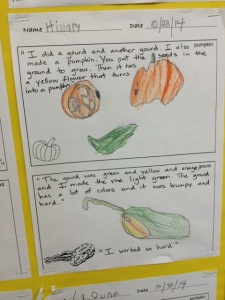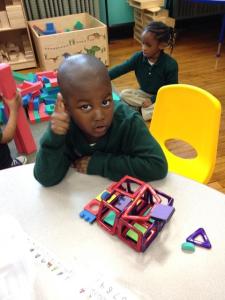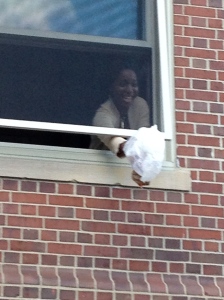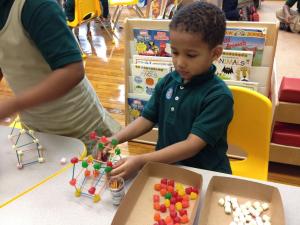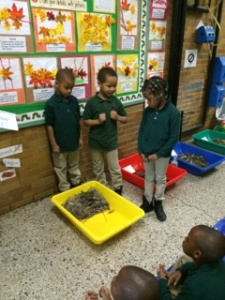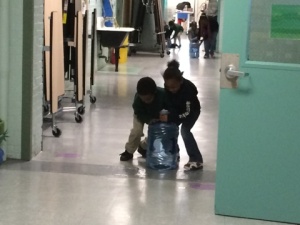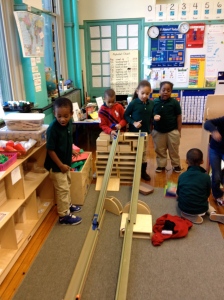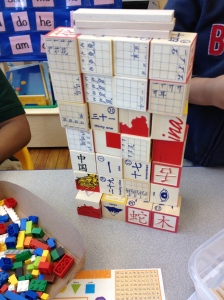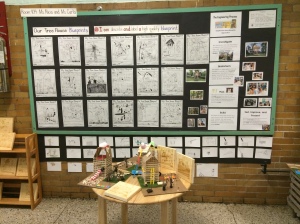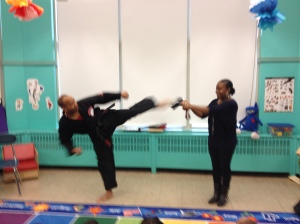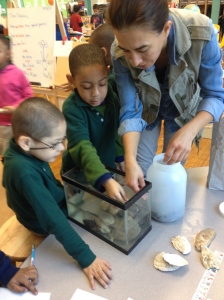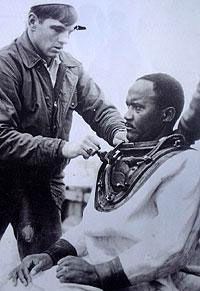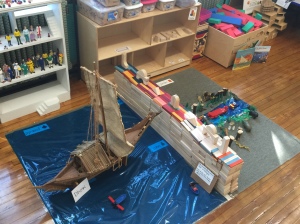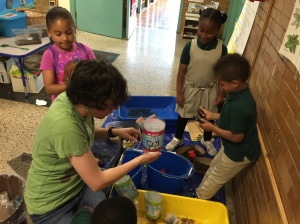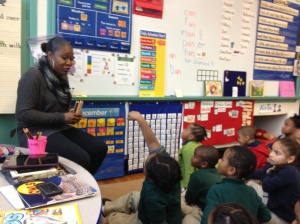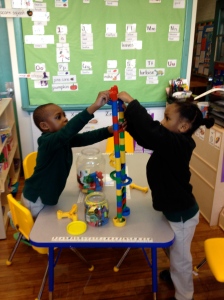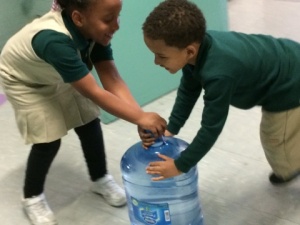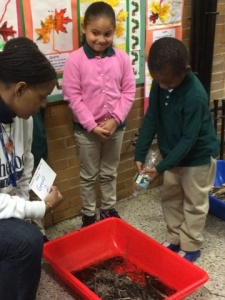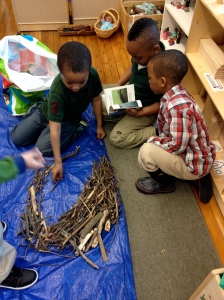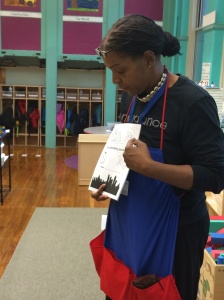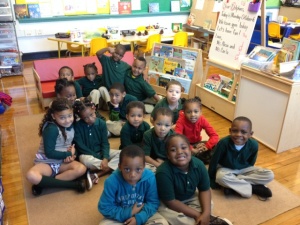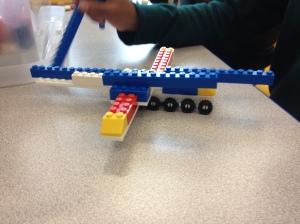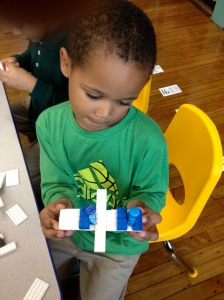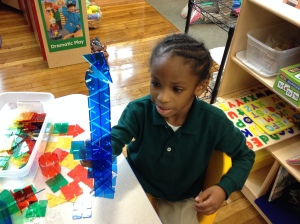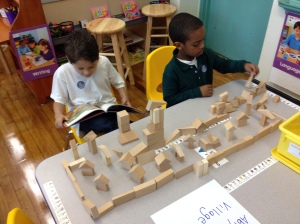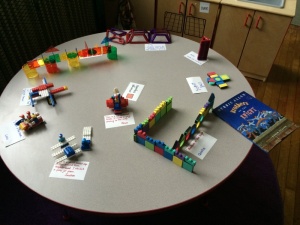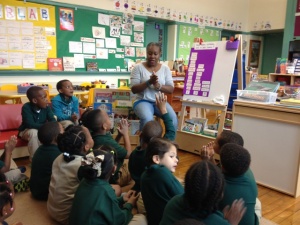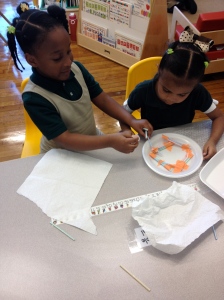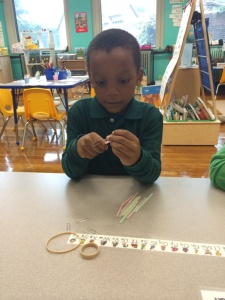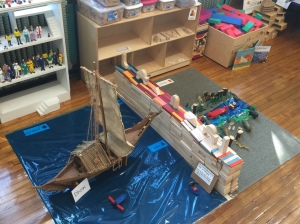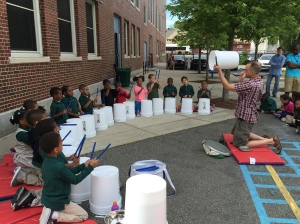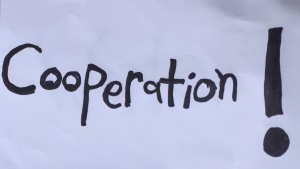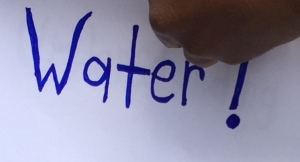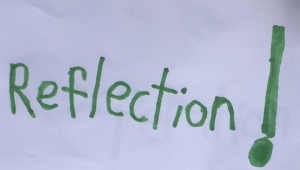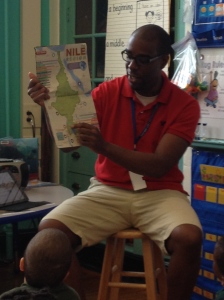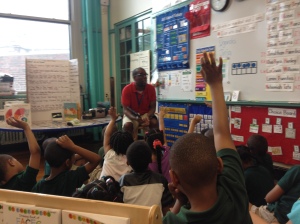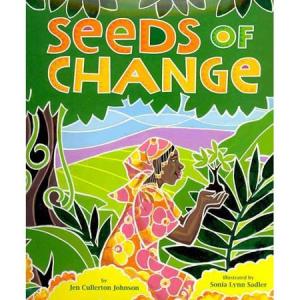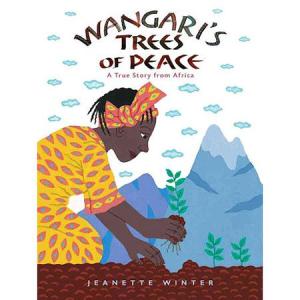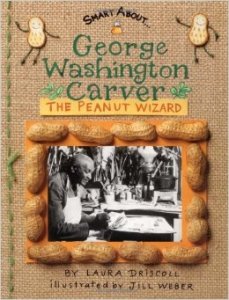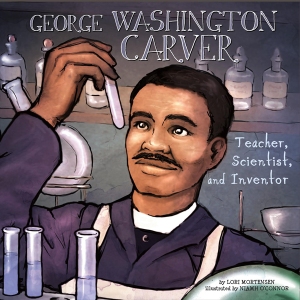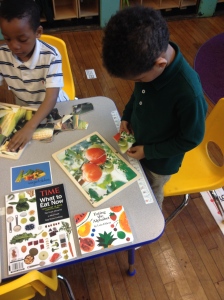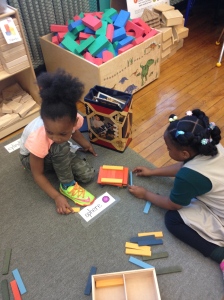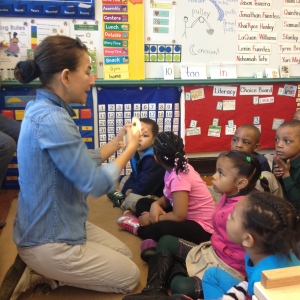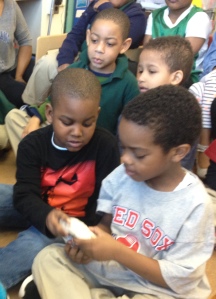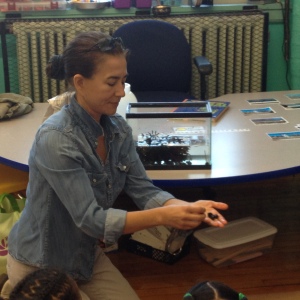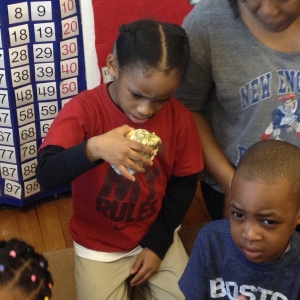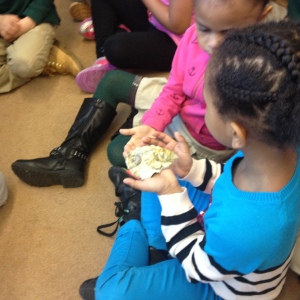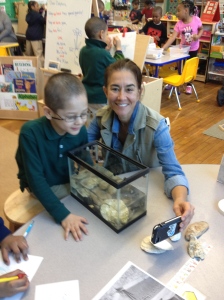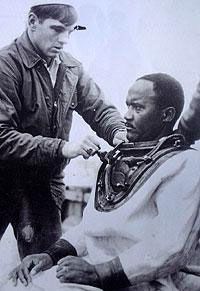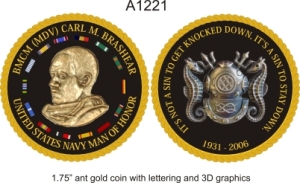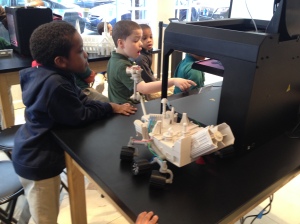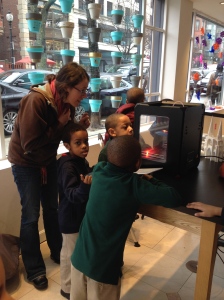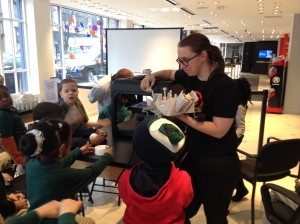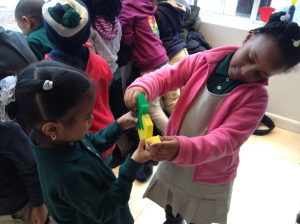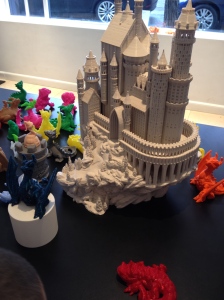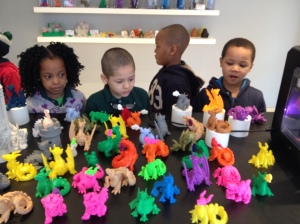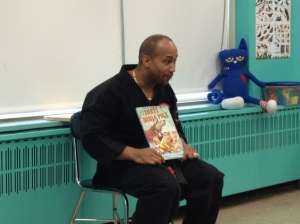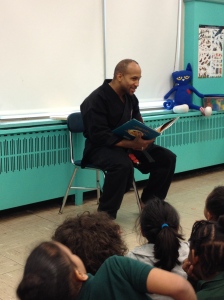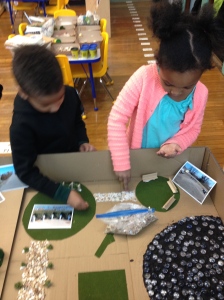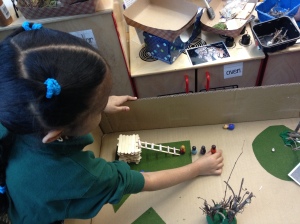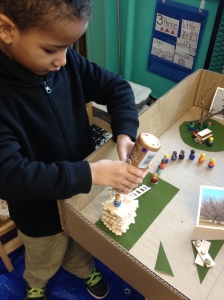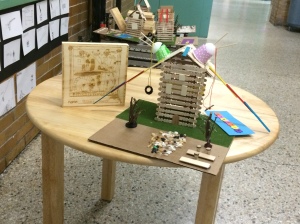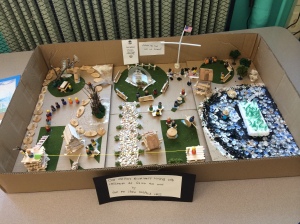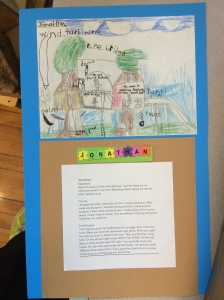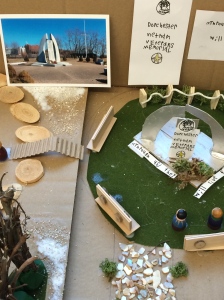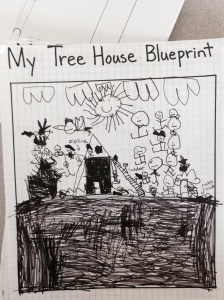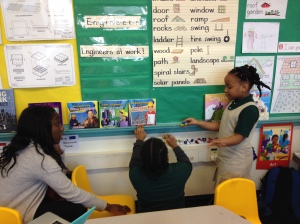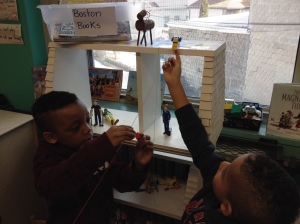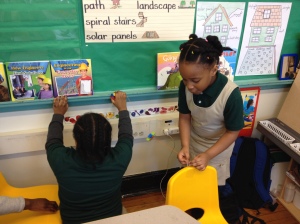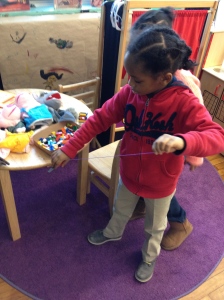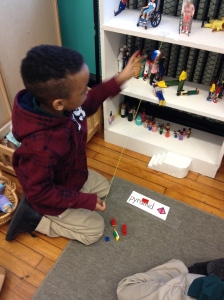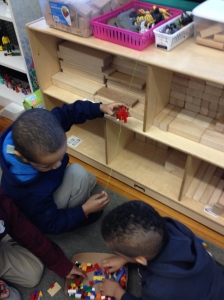“The best schools keep their eye on the prize—the kids—not just whether they are pleasing higher civil authorities. They see the job of adults as one of nurturing intelligence and empathy, openness to the world, while cherishing their children’s uniqueness. They stay close to families, and see teachers and parents as allies not adversaries. Schools for democracy are quintessentially always an act of collaboration with families and communities —-expression of the grassroots vitality and ingenuity that has always made our nation great.” – Deborah Meier
Thanks for a great year!
“The Kids’ Nile Project” Song II – Water Touches Everyone
The songwriters of the Dolphin Class in Room 104 spent the last three weeks involved in the writing process. Our goal was to publish a song that incorporates all of their learning about the Nile Project and the importance of clean water for everyone. During our writing process, students brainstormed what they learned about the Nile River. This includes the importance of cooperation, respect, water conservation, and equality, and that everyone deserves clean water, no matter your economic status or race. We realized that everyone on the planet needs water and we have to work together to make that happen. That is where our title came from. Together we started brainstorming rhyming words (ie Nile and denial). From there, we started to write sentences that rhymed and made sense. We wanted to write a piece that would get people’s attention, raise awareness about the global and local issues around water, and to empower our students and to see themselves as activists and change-makers. We realized that what is going on for the Nile countries is also happening in our country with the drought in California. We also revisited the importance of Dr. Frankic’s work and the Kids’ Biomimicry Lab at Savin Hill Cove in Dorchester. Oysters are one of nature’s important water filters. These bivalves are key to helping to sustaining our water supply and also help prevent erosion. They are not just for eating!
In the block area, students built the Grant Renaissance Dam in Ethiopia. It is the source of 80% of the water in the Nile River. We revisited what the students learned when we studied beavers in the fall and students were able to apply those learnings to the model of the dam they built in the block area. As the students started building, they said to each other “we have to make this level and stable”. They planned what they were going to do and which blocks to use. They had a lot of conversations about what they were doing, what was working (and not working) and how to improve their design.
Students wrote a draft of the song and got feedback from each other and from other educators and the music teacher. The students then incorporated the feedback and made some edits to the song. You can hear the final version of the song at https://soundcloud.com/user550653951/kids-nile-project-song.
The PA Shaw Arts Performance: “The Kids’ Nile Project” Song I
Our class is collaborating with the Nile Project, directed by Mina Girgis, Dr. Barbara Brown at the African Studies Center at Boston University, and Dr. Theresa Perry, Chair of the Race, Education and Democracy Stem Network and professor at Simmons College.
This is the performance of Song I, which was created with African Drumming teacher Jonathan Hess. You can view the performance at https://www.youtube.com/watch?v=4QueDeH2HwQ&feature=youtu.be.
Song II (The Nile: Water Touches Everybody) is written by the students and will be posted next week.
A Nile Visitor
Mr. Radix-Carter, a K1 teacher at our school, visited our classroom to talk about his trips to Uganda. He lived there for 5 months, volunteered in an orphanage, and spent time along the Nile. He showed us pictures of some of the animals he saw along the Nile. He told us about all the farmers and fishermen he saw working along the Nile.
To learn more about the Nile River and the Nile Project, you can visit these links:
Wild Nile “Paradise Found” (1/3)
Inspired by George Washington Carver and Wangari Maathai
See our newsletter for a more in-depth write up about our work around George Washington Carver and Wangari Maathai, keepers of the earth.
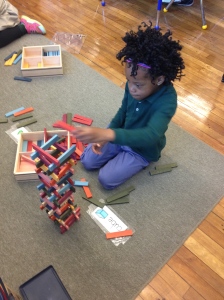
Problem solving what she could build that would help the tree grow erect. She kept persevering even though her tower kept falling down.
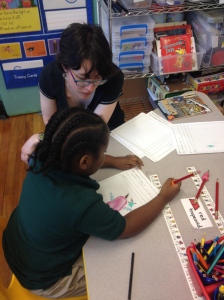
We asked students, “If you could invent something out of sweet potatoes or peanuts, what would you make?” Cameran said he would invent a Sweet Potato Man, so he is illustrating and writing about his invention.
The Kids’ Biomimicry Living Lab at Savin Hill Cove
The model that we entered into the Mayor’s Our Boston competition was selected to be on display at City Hall from April 23-May 1. Parents: please take your children and family to see the exhibit before May 1st. The Our Boston competition engaged Kindergarten students across the city in an authentic construction process to envision, plan, research, execute and revise a model that answers the question: What suggestions do you have about construction in our city to make Boston a fairer and more interesting place for children?
This ends our construction unit, and has launched our next unit, Our Earth. We will be researching, conducting experiments, and learning about the Biomimicry Living Lab at Savin Hill Cove.
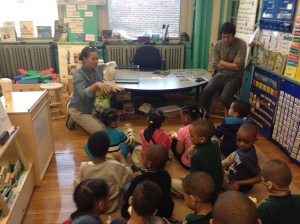
Dr. Peter Kiang and Dr. Anamarija Frankic from Umass Boston came to talk to our class about our outdoor classroom, which is now called “The Kids’ Biomimicry Living Lab at Savin Hill Cove”.
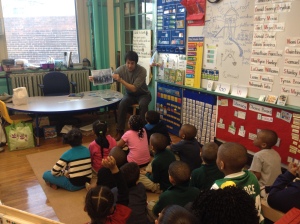
Dr. Peter shared a photograph of the Vietnam Veterans’ Memorial with our class. His college students also learn about this important place, which is next door to the Kids Biomimicry Living Lab.
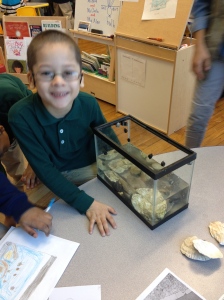
Students were fascinated by the opening and closing of the clam’s shell and by how the snails come out of their shells.
Our next science unit is Animals Two by Two. We will be looking at living and non-living things at the biomimicry living lab (i.e. land snails and water snails, goldfish and guppies, animals that live in shells, water quality, pollution in the ocean, and how to test water quality at home and at school).
Our guiding question for this unit is “How can we adapt and care for both the people and natural community in a long term approach?”
Our big engineering challenge will be for students are going to build water filters so they can test the water quality at home. We will also be doing experiments around water quality at school. In the dramatic play area, we are creating a Biomimicry Lab where students can observe and touch, research and document what it means to step into the shoes of an oceanographer.
We are going to study artist Eric Carl, the author of the Very Hungry Caterpillar, who has a museum in Western Massachusetts. This would be a great place to bring kids. We are also going to study artist Jason deCaires Taylor. Jason founded and created the world’s first underwater sculpture park. Jason designs and builds underwater sculptures that serve as reefs to to protect the coastline. You can see pictures of his work on his website.
It is important to have a curriculum that is culturally competent and connects to their lives and teaches them about role models who look like them and whose stories are hidden. These are the stories that will help our students know who they are and what they can accomplish.
With this in mind, we are going to talk about Carl Brashear, who was the first African American to become a US Navy Master Diver, earning this title in 1970. There is a children’s book we will be reading called How They Got Over (African Americans and the Call of the Sea) by Eloise Greenfield. The movie Men of Honor also tells the story of his life.
“It’s not a sin to get knocked down. It’s a sin to stay down.” -Carl Brashear
Our Boston Competition
Connecting Classroom and Community
This week we took a field trip to the Makerbot store to learn more about 3D printing and how it works. Kids were fascinated with how you could take a picture and turn it into an actual object. When Eva showed us the file of the 3 little pigs, we connected it to the pigs and wolves that we printed at the South End Technology Center. The kids were enamored by a video of a spider that was made of 3D printed parts and wanted to know how it works. They were very surprised that 3D printers print so slowly and recognized that we have 3D objects in our classroom too and that we have been talking about 3D objects in our construction and math units.We also were able to touch some of the objects in the store and they gave us a parting gift. Just as exciting for most kids was the bus ride. Some of them had never been on a school bus before, so they felt very empowered.
On Friday, Sensei Marvin Harris came to visit our school. He attended the PA Shaw as a Kindergartener and now lives 3 streets away from the school. He teaches at the YMCA in Dorchester and at the Curley and Young Achievers schools. He did a re-reading of the Three Ninja Pigs, which was the kids’ favorite book from the Construction Unit. He then did a demonstration for the students and talked about martial arts as a way of protecting yourself and the importance of respecting yourself, your body and your peers.
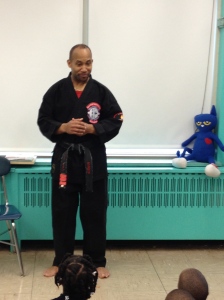
Talking about how martial arts should be used to protect yourself, not to hurt others and the importance of treating people the way you want to be treated
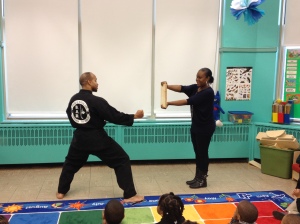
Ms. Carla held the board for Sensei Marvin Harris.
Enjoy the Process: Building our Treehouse Models
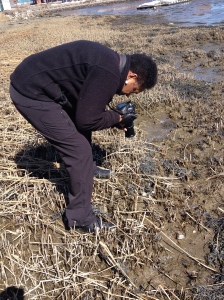
Ms. Alicia’s friend Sharon Riley, Executive Director of Cradles to Crayons, who is helping us document our outdoor classroom

After planning, we started gluing down the grass and thinking about how to represent what we saw in the photographs
Engineering a Treehouse
This week we have been digging deeper into our KinderStudy of treehouses. One of our learning targets this week was for students to draw and label a high quality blueprint of their treehouse. They worked really hard coming up with ideas and then putting those ideas onto paper. Students drew some of the objects they wanted in and around their treehouses (rope bridges, domes, spiral stairs, platforms, solar panels, slides, doors, ladders, roofs, ziplines, landscaping, etc). This served as a vehicle for introducing new vocabulary words . We are giving these drawings to The Tufts Center for Engineering Education and Outreach. They will be using their them as a basis for 3D printed versions of the students’ drawings. We will include 3D printed objects in our outdoor classroom model.
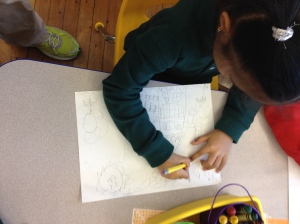
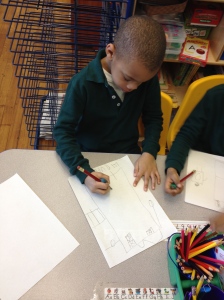

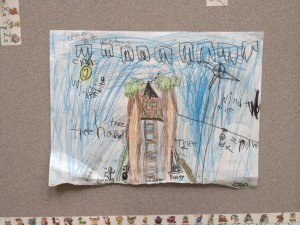
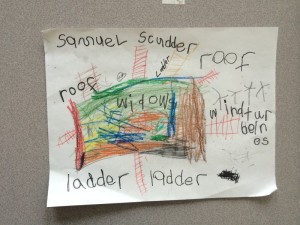
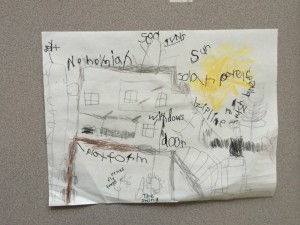
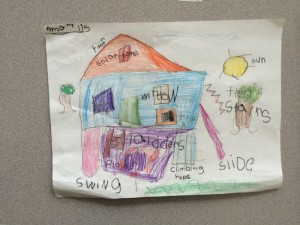
After drawing and labeling their blueprints, some of the students presented their blueprints to their classmates. They gave each other feedback using a protocol that says, “Feedback is kind, specific and helpful.” We are going to continue building the skill of giving feedback throughout the year. We have done several Gallery Walks around structures the students have built. During these Gallery Walks, students walk around, look at what their classmates have built, and give each other feedback.
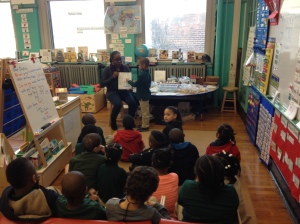

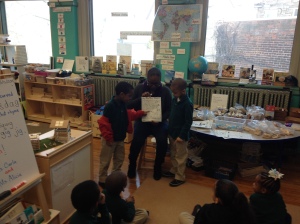

Our students are still enamored by ziplines, so we had each student create a zipline out of string and legos. They then experimented with their ziplines to see how they could make them as fast as possible. They discovered that when they used more lego pieces on a string that dipped, it slowed it down, but more lego pieces on a tight string went faster. We also had them test out different heights and angles and they discovered that the ziplines went faster when it was a very high zipline that went straight to the ground and was pulled tight. We also watched some videos of kids who had treehouses with ziplines in their backyards and watched a video that told us that the longest zipline over water is in Haiti.
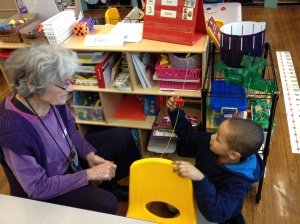
Harvard professor Eleanor Duckworth, who was one of Alicia’s teachers at Mission Hill School, came to visit our class this week. We had fun exploring ziplines with her.
Each student is designing their own individual tree house and will be building a model of it using popsicle sticks next week. They will also be designing and building the landscaping to go around their treehouse. Building their own treehouse will help them continue to develop the skills they will need to design and build treehouses for our outdoor classroom at Savin Hill Cove.


